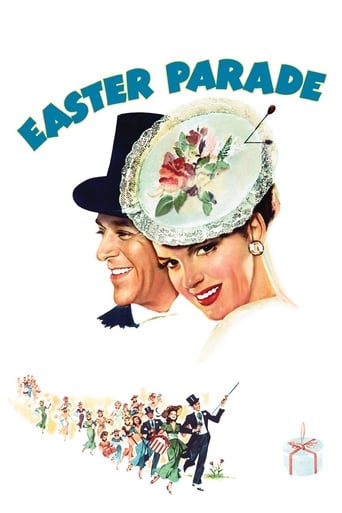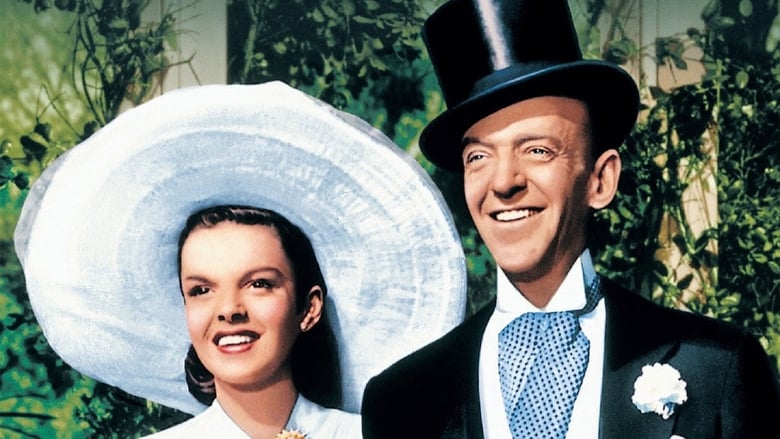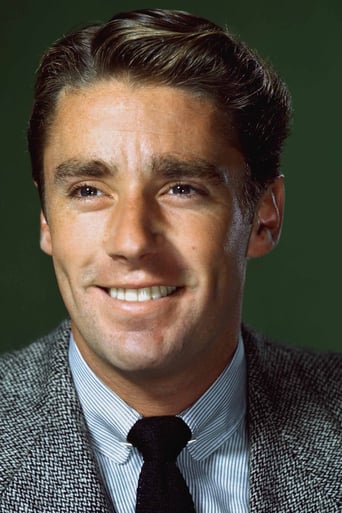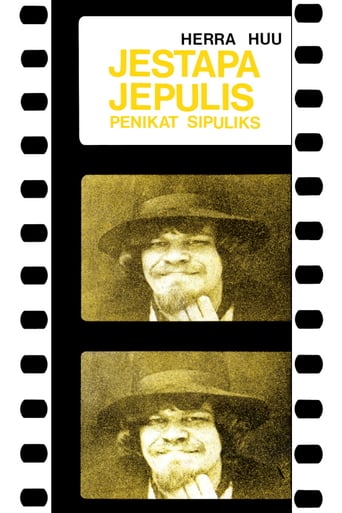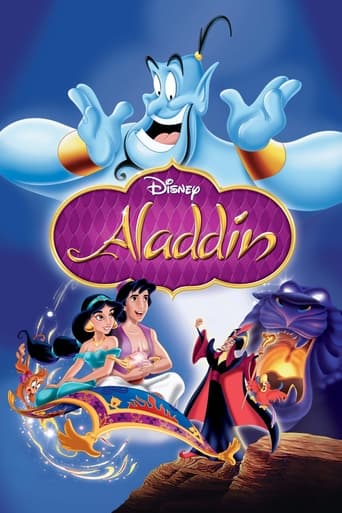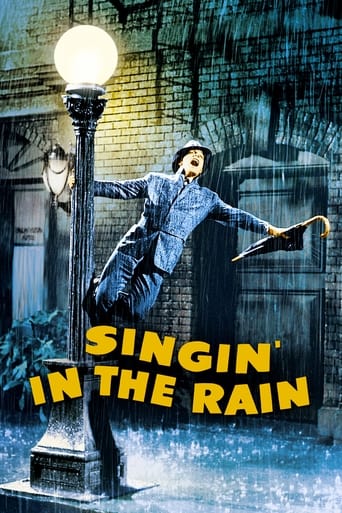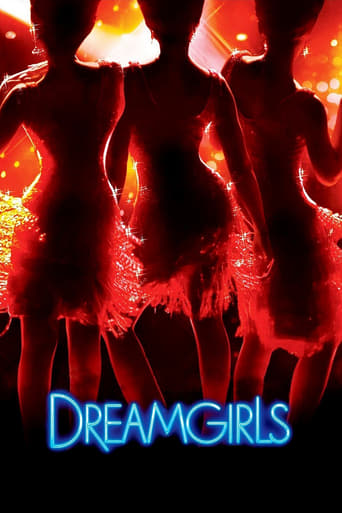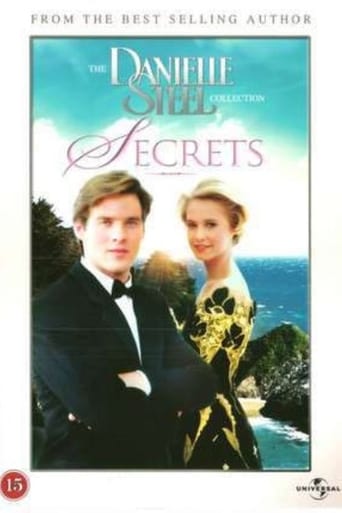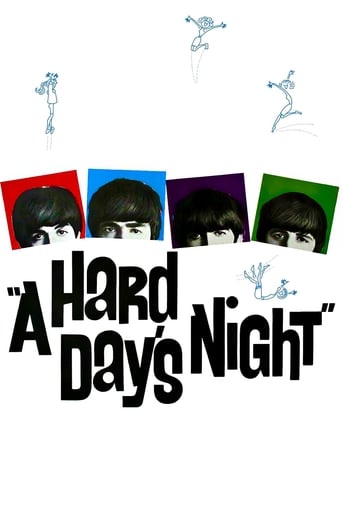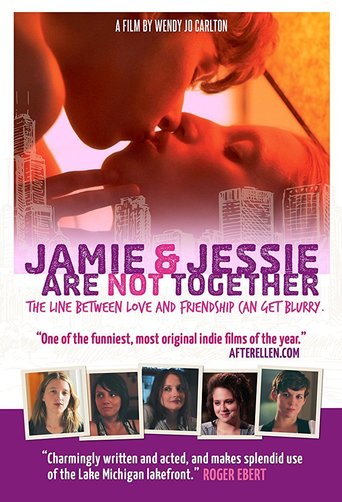Easter Parade (1948)
On the day before Easter in 1911, Don Hewes is crushed when his dancing partner (and object of affection) Nadine Hale refuses to start a new contract with him. To prove Nadine's not important to him, Don acquires innocent new protege Hannah Brown, vowing to make her a star in time for next year's Easter parade.
Watch Trailer
Cast


Similar titles
Reviews
Purely Joyful Movie!
Instant Favorite.
This is one of the best movies I’ve seen in a very long time. You have to go and see this on the big screen.
There are moments in this movie where the great movie it could've been peek out... They're fleeting, here, but they're worth savoring, and they happen often enough to make it worth your while.
"Easter Parade" was another of those "rich and famous" musicals that MGM was known for. It was filmed in glorious Technicolor and the songs were written by the legendary Irving Berlin. Although he was given second billing, star Fred Astaire dominates the film. Judy Garland received top billing but takes a back seat to Astaire here.It's 1912 at the time of the Ziegfeld Follies with the story of Broadway dancer Don Hewes (Astaire), his split with his partner Nadine Hale (Ann Miller) and his discovery of unknown dancer Hannah Brown (Garland) to replace her. Into the mix comes Hewes' rich friend Jonathon Harrow III (Peter Lawford). You see Hewes is using the unsuspecting Hannah to make Nadine jealous and show her that he can team with any dancer. An eternal quadrangle develops between the four principles.Irving Berlin penned a number of classic tunes for this one including the title tune, I Love a Piano, Shaking' the Blues away, Steppin' Out With My Baby, Girl on a Magazine Cover among others.Fred Astaire gets two solo numbers, one in a toy store and a production number (Steppin' Out With My Baby) without Garland. She gets to sing a few forgettable numbers as well as the entertaining "Couple of Swells" in tramp costume with Astaire. Ann Miller, complete with those incomparable legs, has two spectacular numbers, "Shakin' the Blues Away" and "The Girl on the Magazine Cover".Judy Garland had by this time started her descent. No longer did she have Vincent Minnelli to make her look beautiful and she was having affairs with several prominent personalities. Fred Astaire literally carried her throughout this film. She would make only two more MGM films before being terminated by the studio.Also in the cast in his first film is Jules Munchin as Francois the waiter and Clinton Sundberg as Mike the barber. Also of note, is Richard Beavers the unbilled singer in the "Girl on the Magazine Cover" number. He had a great voice but never really made it in movies. And. it was a good thing that Peter Lawford didn't pursue a career as a singer as his "crooning" of "A Fella With An Umbrella" will attest.
Question: Is it worth enduring a silly, nonsensical plot and some very mediocre and lackluster interaction in order to witness Ann Miller doing some sensational footwork, especially one terrific tap dance number, and, after a very long wait, to view a very uplifting, 60 second finale displaying the traditional Easter procession along Fifth Avenue in 1912? Irving Berlin wrote a wonderful song, so why cut it short like that, especially when it and Ann Miller's tap dance are the best offerings here? That makes no sense!Answer: Yes! But I might be a masochist, so take that answer with a huge grain of salt. The iconic theme song will stick in my head for at least another week, and I will probably hum it as I fall asleep for as long, unless my wife fulfills her promise to poison my beer first, but I didn't find the other songs to be the best of Irving Berlin. They did, however, periodically relieve me from most of the inane proceedings, for which I am very grateful. Fred Astaire was a great dancer, but his acting was very repetitive and predictable. Perhaps that was the result of all of the cardboard acting roles that he was handed, at least until "On the Beach", in which he provided at least some dramatic depth. I've seen much better Garland, but she did her best with the mostly flat material "on parade" here. While I enjoyed the grand finale, I would have liked to see it for at least a few minutes longer, and there weren't enough bonnets to inspire many sonnets, so I'll have to tune into the Kentucky Derby in a couple of weeks for true inspiration, and can you guess what song I'll be singing? Don't break ALL of the dishes, dear. Save a few. We'll need them."In your Easter bonnet, with all the frills upon it." Crash! Bang!
Some old-time Hollywood musicals have a style which plays well in any era. To others time has been less kind as they come across as relics of a time gone by. Unfortunately Easter Parade is one of those relics. It was a smashing success in 1948 but all these years later it doesn't play very well at all. The plot is too slight, the pacing is too slow, the songs are too dull, the whole package just doesn't work. Now any movie starring Fred Astaire and Judy Garland isn't going to be all bad. Astaire's dancing and Garland's singing are as great as you imagine they would be. Not for nothing were they film legends. But all in all this is a film which makes a rather poor showcase for the renowned talents of its famous stars.The bare-bones plot involves Astaire's character of Don having his dance team partner leave him to take up a solo offer. "I'll show her" he thinks, stating that he can take any old girl and make her into a star. Any old girl turns out to be Hannah Brown, played by Garland. Don and Hannah form a new partnership which struggles to get off the ground. But eventually the pairing starts to pick up steam and you think the movie might too. But no such luck. It's still a rather dry, oddly lifeless, musical. And a very antiquated looking and sounding one to the modern eye and ear. The Astaire-Garland pairing never sizzles the way you'd hope it would. Astaire is obviously the far superior dancer of the two. Garland gamely tries to keep up but the contrast is rather jarring. It kind of works for the story in that Garland's character is supposed to be an anonymous nobody of a dancer. But when Astaire's best musical number pairs him with a couple of anonymous hoofers while Garland stands idly by offstage it says a lot. The age disparity catches up with the pair as well once the inevitable romantic storyline kicks in. Everything about the pairing, and thus the movie, seems off somehow. It never comes together properly. The songs, the cornerstones of any movie musical, are all forgettable. The humor largely falls flat, most notably in one scene involving the world's weirdest waiter. The story isn't much of a story at all. Astaire and Garland have their moments but not nearly enough of them to carry this film to success.
This was modeled after the cycle of Warner Bros musicals in the 30's; so for the first part we get various backstage tribulations about the effort to stage a show, usually a search for love that can inspire dance, with the eye-popping show in question as the second part.It starts with the miraculous dance pair breaking it off. She wants to be a star on her own right; he sets out to prove that he can get any girl to dance as well as she can. He plucks the first girl he sees out of a chorus line in a bar, just like he did with her the first time. She turns out to be a disaster, humorously rendered as her not even knowing which foot is left.So how to make headlines once more? Of course he grooms her into the image of that first woman, and she turns out great; but only because, unbeknownst to him, he was seducing out of her the love that can make a difference. So eventually the two rival shows are made to spin at the same time, vying for headlines and our attention. The new pair visits the opponent to strut their newfound triumph under her nose, but she's cunning enough to seduce a dance out of her ex-partner that will break them apart.Naturally, this being an MGM production, the finale is drenched with the wistful sentiment about wholesome values one is led to expect. The two of them stroll happy together on the Easter Parade, as promised in the beginning.So generally speaking this may seem like ordinary stuff for the time. Two things make it stand out however. One is Fred Astaire, such heavenly, chattery legs. Put simply, there is no Michael Jackson without Astaire. The other is a kind of soft Vertigo at the heart of the candy-colored spectacle about an obsession with cultivating an image, less morbid this go round, less dangerous, but potent the right amount if we keep in mind how it mirrors across the sparkling surface of a deeply troubled Judy Garland.We know how MGM cultivated the young star in the image of the chaste teenage girl that she's also saddled with in the opening of this film. In the finale she manages to lift herself out of the confines of that image and asserts herself as a sexual, dynamic woman, likely mapping to some part of her struggle in real life to pursue her heart. Among her many lovers, she counted Frank Sinatra, Welles, Mankiewicz, and Tyrone Power. She had enough pull in Hollywood by this time to get then husband Vincente Minnelli fired from this.Our loss here is that Chyd Charisse broke an ankle and could not appear. Ann Miller as replacement acquits herself pretty well as the scheming diva. Her last on-screen glimmer decades later would be Mulholland Dr., where she reflects on the bygone Technicolor glories here.

